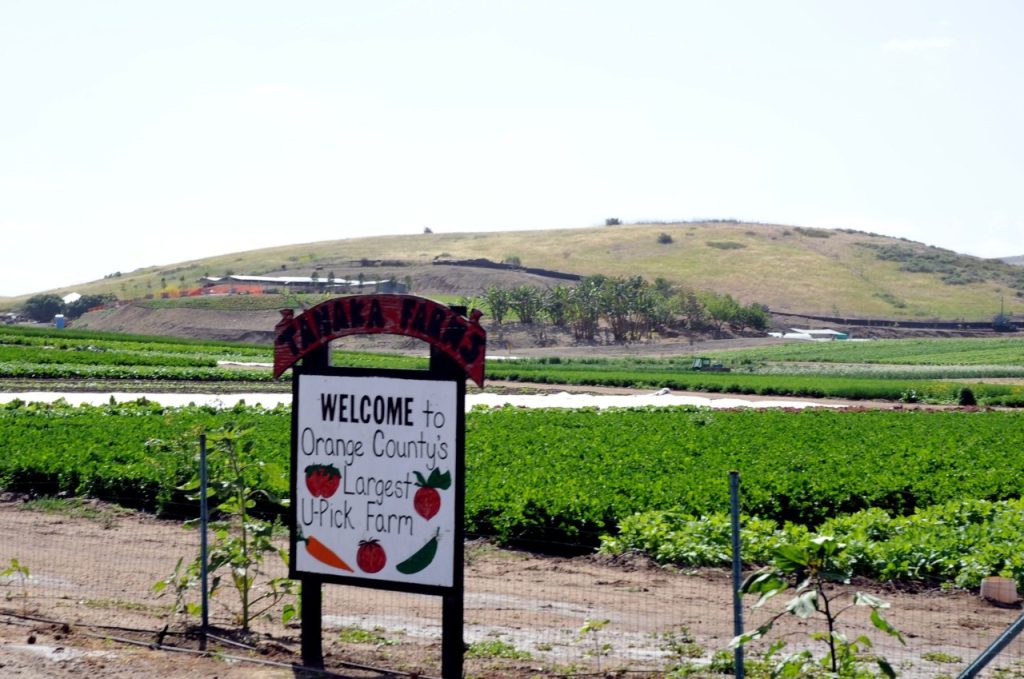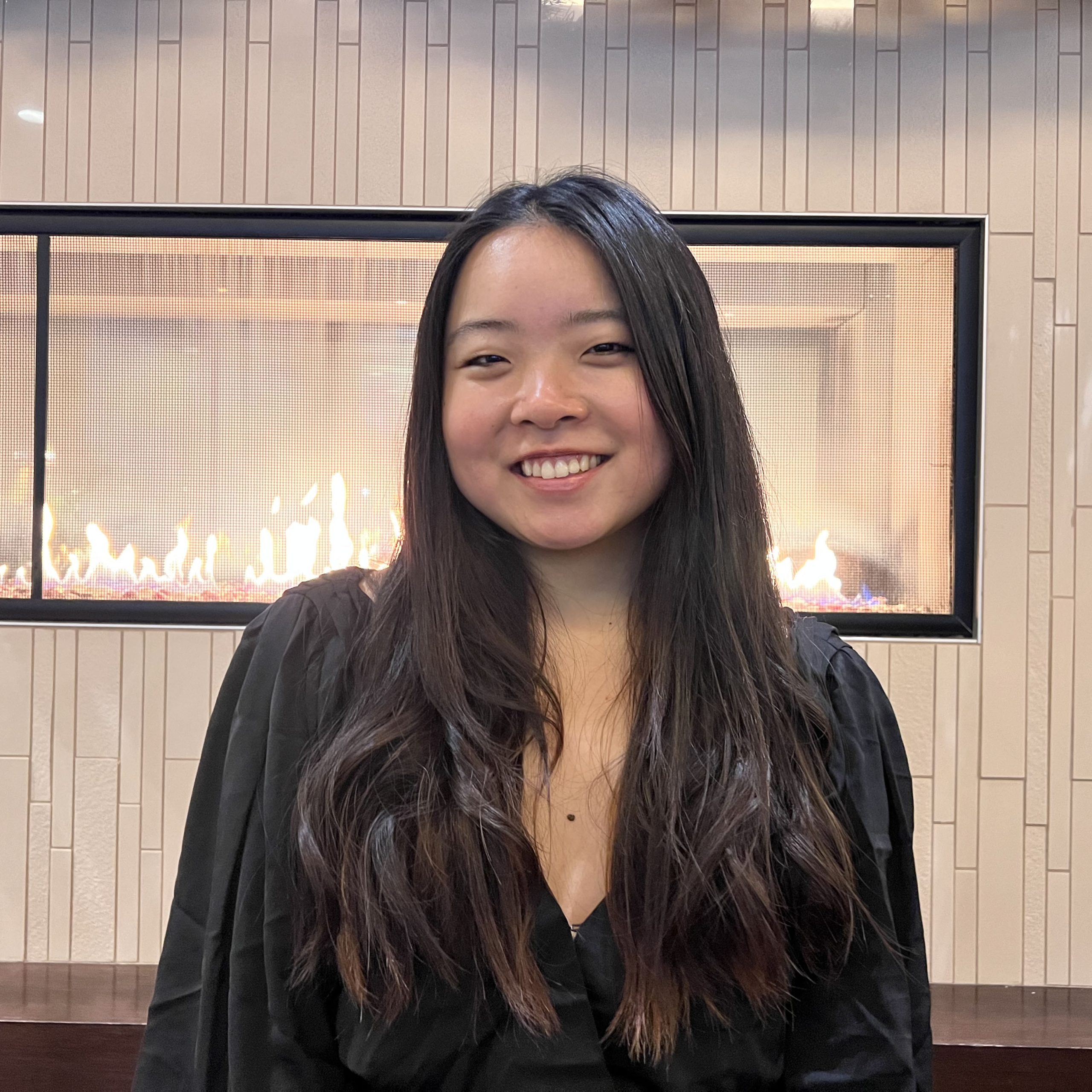
Nestled just off the busy 405 highway within Irvine, California’s maze of technology companies and startups, more than 60 different varieties of fruits and vegetables thrive year-round on a 30-acre land.
Using organic growing methods, Tanaka Farms grows produce that is sold at their market stand and through a community-supported agriculture (CSA) program. But the farm is more than just a place for crops. It also invites visitors for educational farm tours, seasonal and fundraiser events and U-pick activities. Moreover, the farm serves as a place where stories of first- and second- generation Japanese American farmers continue to be preserved.
Tanaka Farms traces its origins to the early 1900s when Takeo Tanaka immigrated from Hiroshima, Japan to California and, like many Japanese immigrants of the time, found work as a farmer. His son, George Tanaka, a second-generation Japanese American also pursued farming. But, when President Franklin D. Roosevelt authorized the forced relocation of Japanese Americans on the West Coast to internment camps during World War II, George fled to Utah. After the war, George Tanaka and his wife returned to farming in Fountain Valley, California where their son, Glenn Tanaka was born.
Glenn, a third-generation Japanese American, has been working at his family farm since 1978 when he graduated from California State Polytechnic University Pomona where he studied agricultural business.
“I never had a job outside the farm,” Glenn, who grew up there, said. “My goal was always to become a big time farmer.”
Now Glenn and his son, Kenny Tanaka, run the farm together, growing produce, giving educational farm tours and hosting community events.
Preserving stories of Japanese American farmers
As one of the last remaining Japanese American family farms in the region, Tanaka Farms began taking on the role of sharing the history of Japanese American farmers five years ago. Their Issei and Nisei (First- and second-generation Japanese American) Farmers Legacy Program collect and share stories of Japanese American farmers who played an irreplaceable role in building California’s agricultural landscape. So far, they have accumulated more than 100 stories.
One of the goals for this project is to make sure the history is passed onto the next generation of Japanese Americans, Glenn said.
“Our history is so important,” he said. “We want to make sure the Yonsei and Gosei (fourth- and fifth-generation Japanese Americans) are part of the discussion and conversation.”
Around the turn of the 20th century, over 400,000 Japanese immigrated to the U.S., mainly to Hawaii and the West Coast, seeking stability. But they soon became targets of racial discrimination, facing an anti-Japanese movement that permeated nearly all sectors of society.
Despite this hostile environment, about half of first-generation Japanese Americans found work on the farm, applying techniques from their homeland. Overtime, they became landowners, establishing their own agricultural businesses. By 1940, in California, first- and second-generation farmers produced about 40% of commercial vegetables and fruits and 70% of greenhouse flowers.
Their success and hard work became a source of jealousy, fueling ongoing discrimination, Glenn said.
In 1942, they were forced to abandon everything they had built, including their homes, businesses and farmland, and relocate to internment camps. President Roosevelt issued this order after Japan’s attack on Pearl Harbor, leading the U.S. to suspect Japanese Americans as national security threats without evidence.
They spent three years or more at isolated, guarded internment camps. Many returned to find their homes and businesses lost, forcing them to start over and rebuild their lives from scratch.
By 1960, the population of Japanese American farmers had dwindled to just a quarter of what it was before the war.
Those who can share their first hand accounts with this discrimination and incarceration are aging. Meanwhile, younger generations, having assimilated into American society, are becoming less connected to their heritage and family history, Glenn said.
He hopes the stories collected by Tanaka Farms will serve as a starting point for sparking conversation and curiosity about this history among the younger generations of Japanese Americans.
The ongoing relevance of Japanese American history
The histories of Japanese Americans also must continue to be told so our society can learn from them and prevent such injustices from repeating, Nina Wallace at Densho said.
Since 1996, Densho – a Japanese word for “passing stories to the next generation” – has collected Japanese American life histories through interviews, photos, documents and artifacts. Beyond preserving and sharing the history, in recent years Densho has been drawing parallels between the experiences of Japanese Americans during World War II and current discussions on immigrant rights and policies, Wallace said.
Similar to Tanaka Farms, Densho also aims to engage with a younger Japanese American audience who are several generations removed from those who experienced the incarceration.
But, Wallace, who manages the organization’s social media, said she has noticed a growing interest on Instagram among fourth- and fifth-generation Japanese Americans in learning about their history. As the Trump administration aggressively targets immigrant communities through executive orders and actions, younger generations of Japanese Americans are beginning to recognize that their community’s history of incarceration is not just a distant past but a relevant warning for the present.
“We are in a political climate where it feels like that history is being repeated and we have seen younger folks become more interested and engaged,” Wallace said. “They see how similar things have happened to their family.”
The Japanese American National Museum (JANM) in Little Tokyo in Los Angeles has also become a place for more than telling history but also connecting it to the topics of civil rights and social justice, Lynn Yamazaki, director of education at the museum, said.
“It was established by Japanese Americans to tell our story so that history doesn’t repeat itself,” Yamazaki said. “But now it is a place that is to tell an American story because history is repeating itself.”
JANM, the national repository of Japanese American history, hosts exhibitions, educational programs, and documentary projects. Stating that the incarceration is “a documented case study of when democracy failed in this country,” Yamazaki said the museum strives to encourage visitors and students to engage with lessons learned from the Japanese American experience.
“When we see injustice in our world, we, as an organization, have the responsibility to speak up,” Yamazaki said. “The experience of discrimination, injustice and racism is shared by many immigrant groups, and sharing all of our stories contribute to deeper understanding”
Connecting with the community on the farm
At their annual fundraiser in June, Tanaka Farms plans to feature their Issei and Nisei (First- and second-generation Japanese American) Farmers Legacy Program.
The fundraiser, Walk The Farm, began in 2011 to help Japanese farmers who lost everything including their farmland when a magnitude-9.0 earthquake struck the country’s northeast coast. As a Japanese American farmer, Glenn said he immediately knew he wanted to help the Japanese farmers.
“First images I saw when the earthquake happened is all the farmland and the greenhouses being washed away when the tsunami came about,” Tanaka said.
More than a decade later, Walk the Farm continues to bring people together each year to raise money for farmers affected by natural disasters. All proceeds go directly to relief efforts, supporting not only those impacted by the 2011 Japan earthquake but also farmers affected by the 2023 Maui wildfires, tornadoes in Oklahoma and droughts in central California.
Tanaka Farms remains committed to supporting farmers in need, but Glenn Tanaka also sees the fundraiser as an opportunity to preserve and share the history of Japanese American farmers, particularly with the younger generation.
“We hope that the project accomplishes more than just sharing the Japanese American farmer story but also to prompt the younger audience to ask questions to their older family members and be part of the conversation,” Glenn said.

